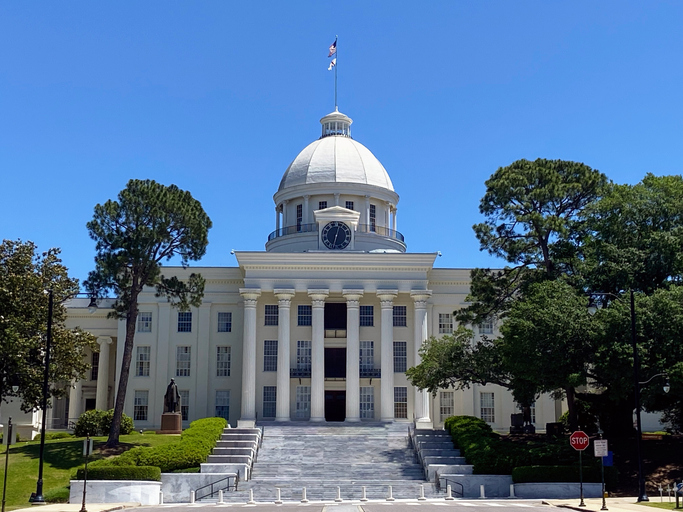 Source: Ray Tan / Getty
Source: Ray Tan / GettyIn the early hours of September 29, 2023, at approximately 2 a.m., a police officer in Montgomery, Alabama, discharged 18 shots at an armed Black man, igniting significant controversy and discussion around police conduct and self-defense laws. The officer, Mac Marquette, maintained he acted in self-defense and sought to have his case dismissed under Alabama’s “Stand Your Ground” law. This law provides individuals immunity from prosecution for using deadly force when they believe they are in imminent danger and are in a location where they have the right to be. However, the judge dismissed this motion after reviewing police bodycam footage, emphasizing the importance of scrutinizing police narratives rather than accepting them without question.
Judge Charles Elliott of the Morgan County Circuit Court stated that Marquette, charged with murder in the shooting of Steve Perkins, failed to demonstrate that he acted in self-defense. At the time of the incident, Perkins was in his own front yard, indicating that the circumstances did not justify Marquette’s lethal response. Marquette was present alongside a tow truck driver attempting to repossess Perkins’ vehicle, which adds layers to the unfolding events and raises questions about the appropriateness of police involvement in such situations.
According to reports from the Associated Press, the tow truck driver, Caleb Combs, was legally authorized to repossess Perkins’ truck due to unpaid debts, as evidenced by lien documents presented in court. However, the judge noted that Marquette lacked the necessary authorization to assist Combs, highlighting a critical aspect of Alabama law that stipulates law enforcement must obtain a court order to engage in repossession activities. This legal requirement was not met, further complicating the justification for Marquette’s presence at Perkins’ residence.
The earlier hearings revealed conflicting testimonies regarding the reasons Marquette and two other officers, Joey Williams and Christopher Mukadam, were dispatched to Perkins’ home. It was suggested that the officers were called to provide backup after Perkins allegedly threatened Combs with a firearm during the initial attempt to repossess the vehicle. Combs reportedly met the officers at a nearby location before the situation escalated, creating a scenario where the police were not merely observing but actively intervening.
In a calculated approach, Combs waited for the officers to discreetly position themselves around Perkins’ residence prior to returning to attempt the repossession. The officers were deliberately hidden from view when Perkins exited his home brandishing his weapon again, a critical moment that would lead to tragic consequences. Upon emerging from hiding, Marquette fired his weapon multiple times, less than two seconds after revealing himself, raising significant questions about the appropriateness of his actions in this highly charged encounter.
Body camera footage played a crucial role in the judge’s ruling, showing that Marquette’s line of sight was partially obstructed by the bed of Perkins’ truck. As Perkins turned to face Marquette and briefly attempted to lower his weapon, the judge noted that Marquette’s immediate response was to begin shooting. This sequence of events raises important discussions about police training, decision-making under pressure, and the protocols that should guide officers in potentially lethal situations.
Judge Elliott’s ruling articulated that the officers should have communicated to Combs that he could only proceed with repossession assistance from non-law enforcement individuals unless there was a judicial directive. The officers claimed they were merely present to keep the peace and investigate Perkins for potential misdemeanor charges related to menacing behavior. Nonetheless, a state investigator pointed out that while it’s common for police to accompany repossession agents for safety, the method employed in this instance resembled a covert operation typically reserved for active crime scenes, suggesting a troubling deviation from standard procedure.
To summarize, the presence of the officers at Perkins’ residence was questionable from the outset. Even if they had a right to be there, their decision to conceal themselves and ambush Perkins was not justified, leading to the tragic outcome where Marquette shot and killed Perkins moments after identifying himself as a police officer.
The court determined that Marquette acted beyond the limits of his authority in investigating a menacing claim and was effectively a trespasser on Perkins’ property. The jury will ultimately decide if Marquette’s actions were justified under the circumstances and if he acted within the expected parameters of a police officer when he fired those fatal shots.
Marquette is scheduled to return to court in June for further proceedings.
3 Phoenix Cops Suspended After Violently Arresting Deaf Black Man
Marine Corps Policy Could Discharge Veterans Affected by Skin Condition Predominantly Found in Black Men






